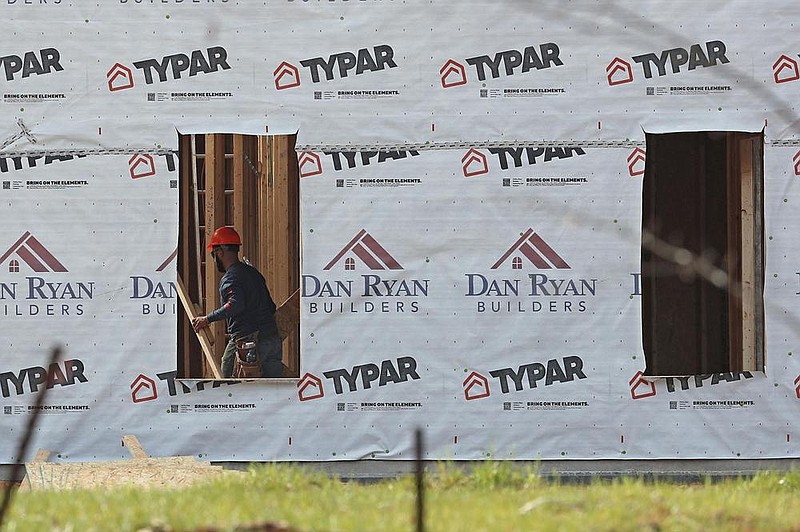WASHINGTON -- U.S. home starts fell more than forecast last month, reflecting less construction of apartments and a decline in the tropical storm-hit South, representing a pause in momentum for a housing market that's been a key source of fuel for the economy.
U.S. housing construction dropped 5.1% in August after three months of strong gains when homebuilders ramped up projects following a pandemic-induced shutdown in March and April.
New homes were started at a seasonally adjusted annual pace of 1.42 million after a 17.9% surge in July, the largest in 12 years, the Commerce Department reported Thursday.
Applications for building permits, which is a good barometer of future activity, dipped a slight 0.9% in August to a seasonally adjusted 1.47 million.
[CORONAVIRUS: Click here for our complete coverage » arkansasonline.com/coronavirus]
While the drop-off in new homes was greater than economists had expected, construction remains 51.6% above an April low and economists said they expected home-building to remain one of the bright spots in an economy still struggling with the coronavirus.
"Strong demand and a soaring level of homebuilder confidence will continue to support housing starts in the second half of 2020, though lingering coronavirus uncertainty and the economy's slower pace of recovery may limit the upside," said Nancy Vanden Houten, lead U.S. economist at Oxford Economics.
Construction starts in the bigger single-family sector showed further strength in August, rising by 4.1%, but this gain was offset by a sharp 25.4% drop in construction starts in the more volatile apartment sector.
Declines in overall construction activity were led by the Northeast, where home construction fell 33.1%. There was also a decline of 17.7% in the South, traditionally a strong region, reflecting in part the effects of tropical storms along the Gulf Coast.
Strength in August came from solid gains of 28.4% in the Midwest and 19.5% in the West.
This week a survey gauging builder sentiment found strong optimism. The survey by the National Association of Home Builders and Wells Fargo showed that builder confidence reached an all-time high in September, even in the face of rising costs for building materials.
Firm demand in single-family homes, reflecting record-low interest rates and changing living preferences as a result of the pandemic, has propelled homebuilder sentiment to a record high.
The government's retail sales report on Wednesday showed the secondary effects of the recent strength in housing. Spending at furniture and home furnishing outlets increased 3.8% in August from the previous year, while receipts at building materials stores were up 15.4%, according to the Commerce Department data.
The pace of strength in the housing market is nonetheless at risk of slowing if the broader economy weakens. Congress is yet to pass a new stimulus package to support small businesses and the unemployed, which could hurt family incomes and their ability to afford new homes.
U.S. average rates on long-term mortgages changed little this week as they hover at historically low levels.
Mortgage buyer Freddie Mac -- the Federal Home Loan Mortgage Corp. -- reported Thursday that the average rate on the 30-year home loan edged up to 2.87% from 2.86% last week. By contrast, the rate averaged 3.73% a year ago.
The average rate on the 15-year fixed-rate mortgage slipped to 2.35% from 2.37% last week.
Housing demand continues as one of few bright spots in the pandemic-hobbled economy. Spurred by the low loan rates, first-time home purchases jumped 19% in August from July, to the highest monthly level ever tracked, according to Freddie Mac. Still, the lack of available homes for sale is a constraint.
In the wider economy, the government reported Thursday that the number of Americans applying for unemployment benefits fell last week to 860,000, a historically high number of people that points up the broad economic damage still occurring nine months after the first case of covid-19 was detected in the U.S.
Information for this article was contributed by Martin Crutsinger of The Associated Press and by Olivia Rockeman of Bloomberg News.
